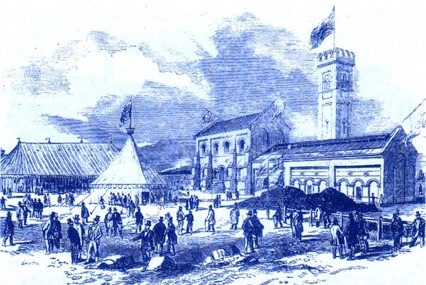Seething Wells is a neighbourhood in southwest London, which was historically a waterworks that supplied London with water from the River Thames. The area is currently under scrutiny due to ongoing speculation and interest surrounding its state of affairs. In this article, we will provide an overview of the current situation and explore the various concerns that have been raised.
Introduction
Seething Wells has been a topic of concern for various communities, including nature conservationists, residents, and students, due to its deteriorating state. The neighbourhood has been facing issues with its filter beds, which are crucial to its ecological and heritage value. This article aims to provide a comprehensive understanding of the current state of Seething Wells and explore the various aspects of the situation.
Background of Seething Wells
Seething Wells is a neighbourhood located in southwest London on the border between Surbiton in the Royal Borough of Kingston upon Thames in Greater London and Elmbridge in Surrey. The area is named after the Seething Wells waterworks, which were built in the mid-19th century to supply clean water to Londoners during a cholera epidemic [10].
Seething Wells Filter Beds
Seething Wells Filter Beds are the site of the 19th-century waterworks located in Surbiton, covering 13 hectares. The filter beds are a designated site of nature conservation, with many historic features and unique characteristics [3].
Destruction of Seething Wells Filter Beds
Despite its importance, the Seething Wells Filter Beds are being destroyed by the current owner, Cascina. The destruction of the site has been a significant concern for many communities, including the Seething Wells Action Group, which is dedicated to the conservation of the filter beds [2]. The group has been sharing pictures and videos to showcase the ongoing destruction and raise awareness of the situation.
Importance of Seething Wells Filter Beds
The Seething Wells Filter Beds are a Site of Importance to Nature Conservation (SINC), located on Metropolitan Open Land in Surbiton’s Riverside South Conservation area [2]. The filter beds support the largest area of standing open water within the area [3]. The site has many historic features, including an aqueduct, an ornamental garden, and a listed filter house.
Community Action and Support
Community action has been instrumental in raising awareness of the situation and putting pressure on the owners and authorities to take action. The Seething Wells Action Group has been at the forefront of this, organizing protests, sharing information, and engaging with the wider community. The group has received support from various organizations, including the Kingston Green Party and the Surbiton and District Residents’ Association [2].
Opposition to Proposed Development
The owners of the ex-filter beds at Seething Wells had proposed to build a new pontoon in the nearby Thames in Surbiton. However, the proposal was met with opposition from almost 50 residents who objected to the plan, leading to its rejection by Kingston Council [5].
Council’s Section 215 Notice
In response to the ongoing destruction of the filter beds, the council has served a Section 215 Notice on the site. The notice requires the owners to take action to remedy the damage and restore the site’s ecological value [1].
Pontoon Building Plan Rejection
The rejection of the proposed pontoon building plan is a significant victory for the conservationists and the wider community. It highlights the growing awareness and concern surrounding the state of Seething Wells and the need to protect its ecological and heritage value.
Kingston University’s Accommodation Redesign Programme
Kingston University’s accommodation redesign program includes the refurbishment of Seething Wells Hall of Residence. The £55 million project aims to provide 1,330 refurbished bedrooms across the Chancellors, Walkden, and Seething Wells halls of residence. The progressive placemaking project will deliver new energy-efficient, state-of-the-art bedrooms, striving towards a new and improved residential student experience [7].
Students’ Reviews on Seething Wells
Students’ reviews of Seething Wells vary, with some expressing disappointment over the lack of maintenance and poor conditions of the halls of residence. Issues such as thin walls without any isolation, frequent breakdown of heating, and no hot water have been raised. However, the location of Seething Wells near the River Thames and Surbiton town centre is appreciated [9].
Seething Wells Neighborhood
Apart from its historical and ecological significance, Seething Wells is a unique neighbourhood that offers a blend of natural beauty and urban convenience. The hall of residence at Seething Wells is a listed building located on an old waterworks site, full of history. The neighbourhood is close to the Surbiton town centre and railway station, and there is plenty of green space nearby, making it an ideal location for students and residents [8].
Conclusion
The ongoing destruction of the Seething Wells Filter Beds has been a cause for concern for various communities. However, community action and support, along with the council’s notice and the rejection of the proposed development plan, highlight the growing awareness and concern surrounding the state of Seething Wells. The importance of Seething Wells Filter Beds as a Site of Importance to Nature Conservation, located on Metropolitan Open Land in Surbiton’s Riverside South Conservation area, cannot be overstated [2].
